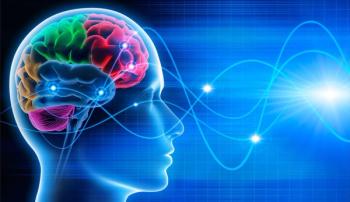
Non-Celiac Gluten/Wheat Sensitivity Affects 1 in 10 Globally, Often with Comorbid IBS
One in ten adults report NCGWS, frequently coexisting with IBS, anxiety, or depression, suggesting a central role for the gut-brain axis in pathophysiology.
Approximately 1 in 10 people worldwide report gastrointestinal or extraintestinal symptoms after eating foods containing gluten or wheat, even without a diagnosis of celiac disease or wheat allergy, according to a new systematic review and meta-analysis published in Gut.
The review, led by Mohammed G Shiha, MBBCh, PhD, MRCP, gastroenterology registrar at University Hospitals of Leicester (UK ), analyzed 25 studies including 49,476 participants across 16 countries to estimate the global burden of self-reported non-celiac gluten/wheat sensitivity (NCGWS).
The pooled prevalence of NCGWS was 10.3%, but estimates varied widely by country—from 0.7% in Chile to 23% in the United Kingdom and 36% in Saudi Arabia. Roughly 40% of individuals reporting NCGWS said they follow a gluten-free diet, often without medical guidance, and about one-third (32%; 95% CI, 17.2%–46.8%) reported receiving a physician diagnosis.
Symptom Patters, Comorbidities
Bloating was the most frequent symptom (71%), followed by abdominal discomfort (46%), abdominal pain (36%), and fatigue (32%). Other symptoms included diarrhea, constipation, headache, and joint pain.
Irritable bowel–type symptoms were reported by 28% of individuals with NCGWS (95% CI, 21.0%–35.2%), representing a 4-fold higher likelihood than controls (OR, 4.38; 95% CI, 3.34–5.75; P <.001). Psychological comorbidities were also common: those with NCGWS were nearly 3 times more likely to report anxiety (OR, 2.95; 95% CI, 1.56–5.57; P <.001) and more than twice as likely to report depression (OR, 2.42; 95% CI, 1.80–3.24; P <.001) compared with controls. Two studies additionally linked NCGWS to elevated psychological distress (OR 1.50–2.24). These data suggest "that psychological factors and the gut-brain axis play the central role in the pathophysiology of NCGWS," the researchers wrote.
Diagnostic Challenges
Despite its prevalence, NCGWS remains difficult to diagnose. The Salerno Experts’ Criteria recommend first assessing symptom relief on a gluten-free diet, followed by a double-blind, placebo-controlled, crossover gluten challenge.2 Yet studies show only a small fraction of self-reported cases demonstrate gluten-specific reactions, while many experience symptom worsening with placebo. This suggests that triggers may include other wheat components or fermentable carbohydrates, and that gut–brain interactions strongly influence symptoms.2,3 Shiha and colleagues note that NCGWS requires clearer classification and symptom-based diagnostic criteria that capture both gastrointestinal and extraintestinal features and reflect its biopsychosocial complexity.1 The variability in prevalence also may reflect differences in study methodology, diagnostic thresholds, or true geographic variation, they wrote.
Toward a Gut-Brain Framework
The researchers propose recognizing NCGWS as part of disorders of gut–brain interaction (DGBIs), which emphasize bidirectional signaling between the gastrointestinal tract and the central nervous system. “Our findings have implications for clinical practice and research,” they concluded. “To date, most research and funding have been focused on the role of gluten in triggering symptoms in NCGWS or on the search for specific disease biomarkers. Reclassifying NCGWS as a [DGBI] and the development of standardized symptom-based criteria for diagnosis could shift the focus toward a more holistic, biopsychosocial understanding of this heterogeneous condition."
Among the study's limitations the authors acknowledge significant heterogeneity in most of the analyses, "which could not be fully explained despite subgroup and meta-regression analyses," Shiha et al wrote. The heterogeneity also might be the result of a combination of residual confounding factors, variability in diagnostic criteria, true differences in prevalence across populations and countries, and potential publication bias. Self-reported symptoms can also be subject to recall or misclassification bias.
The investigators stressed that research going forward should focus first on characterizing NCGWS phenotypes, further investigating the role of the gut–brain axis and psychological comorbidities, "and evaluating the effectiveness of multidisciplinary interventions beyond the gluten-free diet.”
References
Shiha MG, Manza F, Figueroa-Salcido OG, et al. Global prevalence of self-reported non-coeliac gluten and wheat sensitivity: a systematic review and meta-analysis. Gut. Published online October 28, 2025. doi:10.1136/gutjnl-2025-336304
Catassi C, Elli L, Bonaz B, et al. Diagnosis of non-celiac gluten sensitivity (NCGS): The Salerno Experts' Criteria. Nutrients. 2015;7(6):4966-4977. doi: 10.3390/nu7064966.
Molina-Infante J, Carroccio A. Suspected nonceliac gluten sensitivity confirmed in few patients after gluten challenge in double-blind, placebo-controlled trials. Clin Gastroenterol Hepatol. 2017;15(3):339-348. doi:10.1016/j.cgh.2016.08.007
Newsletter
Enhance your clinical practice with the Patient Care newsletter, offering the latest evidence-based guidelines, diagnostic insights, and treatment strategies for primary care physicians.



















































































































































































































































































